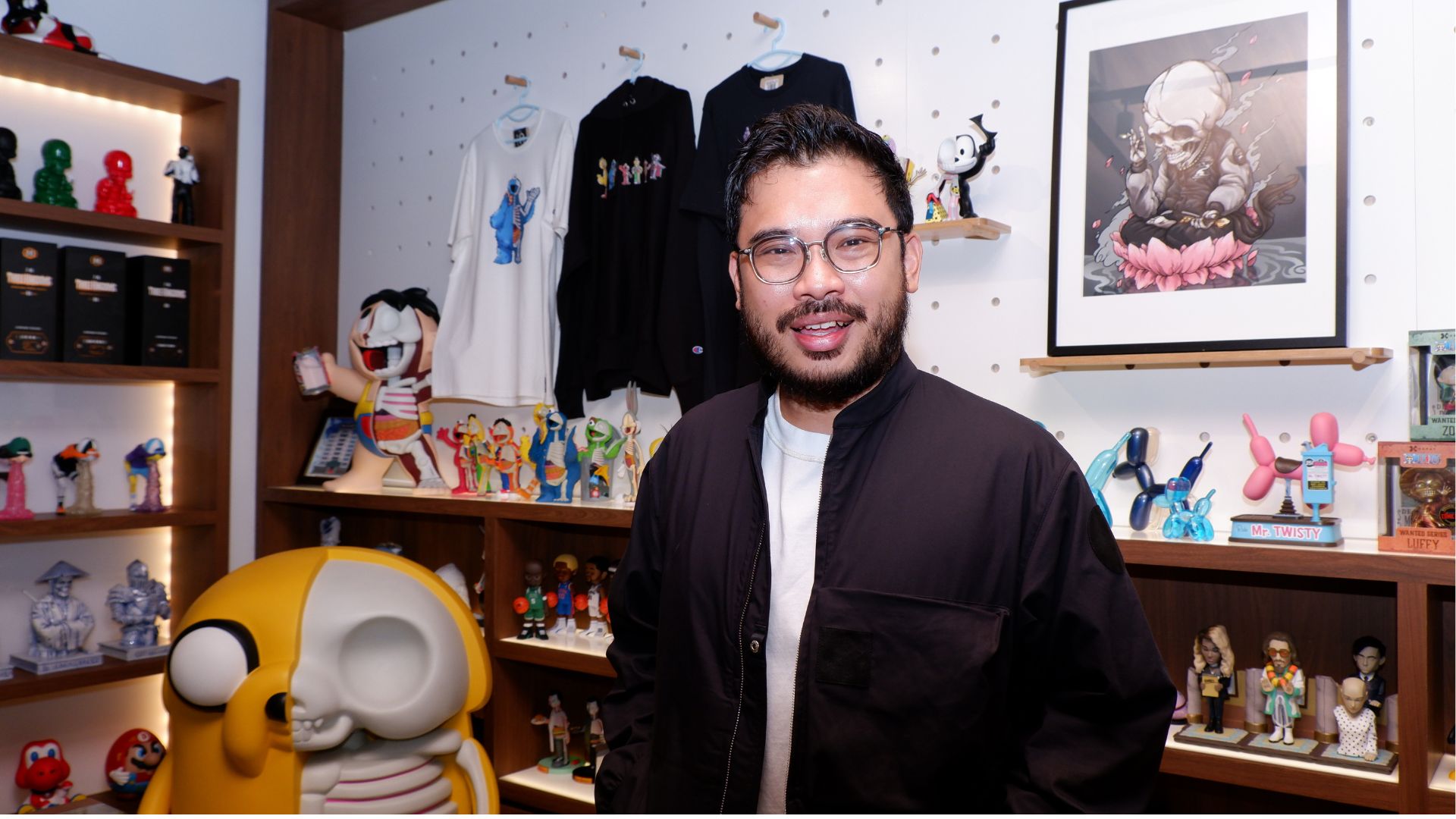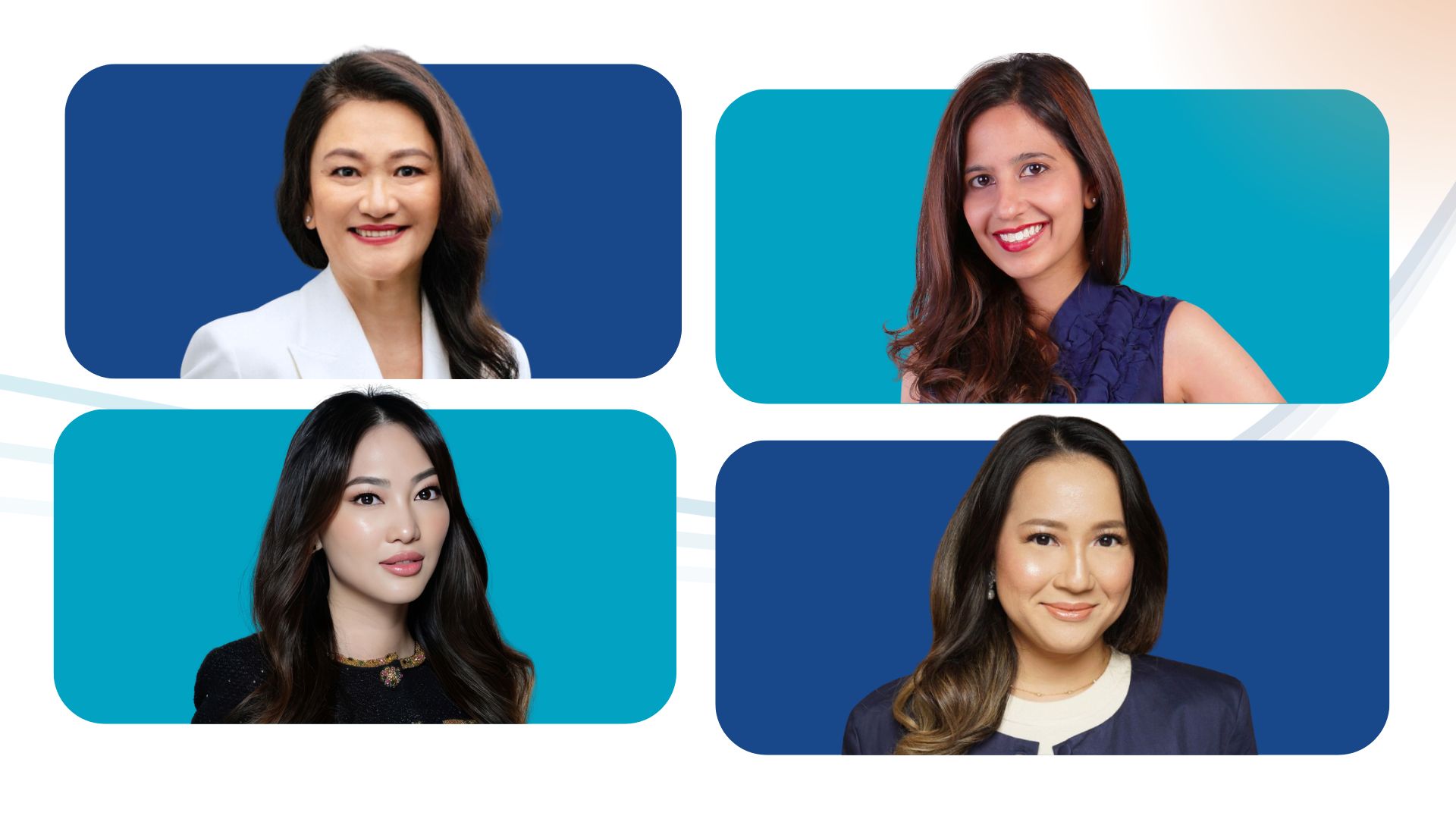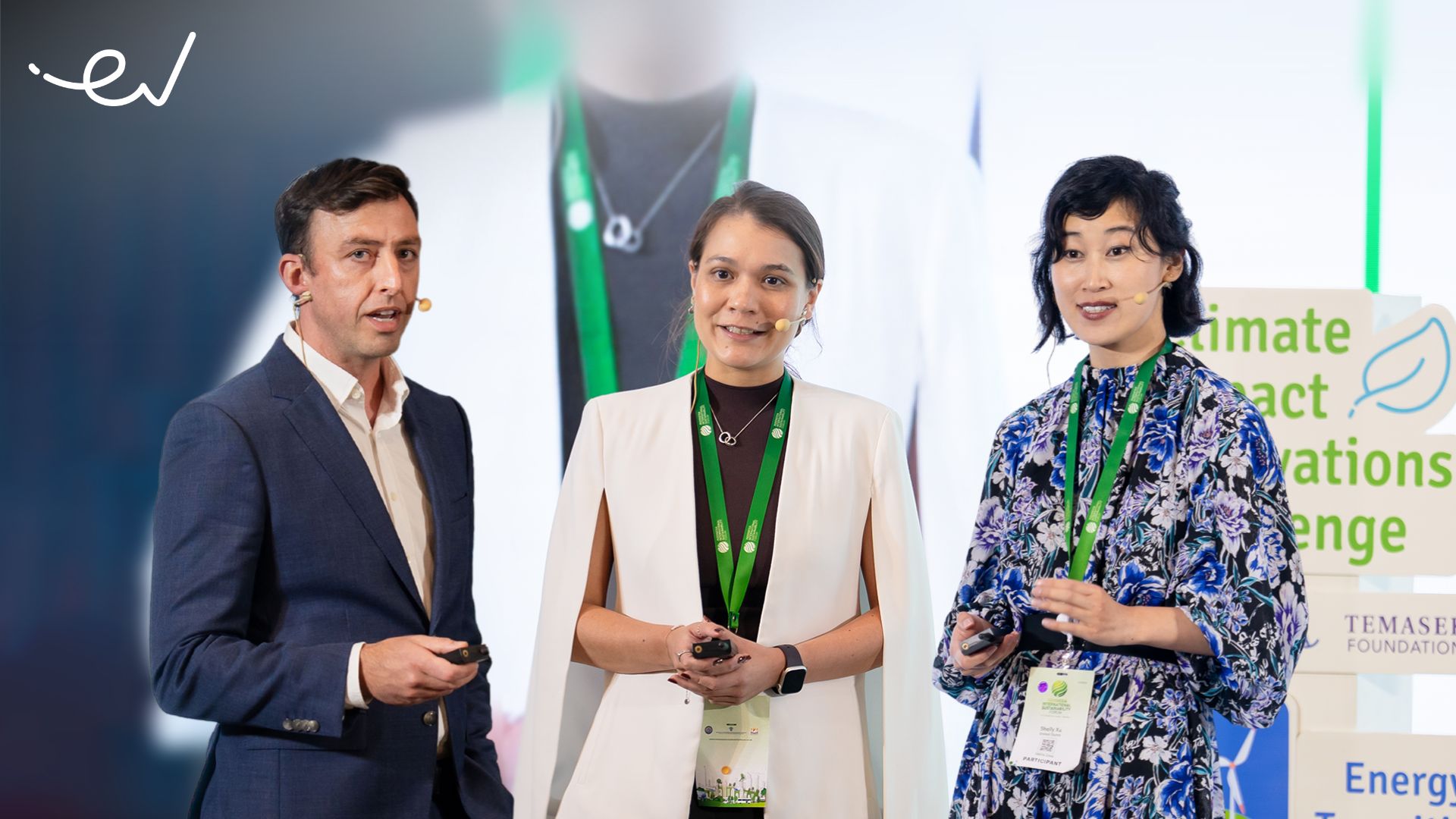Office Hour with Willson Cuaca: What founders need to know about growing startup business and fundraising
26 November, 2020
The young generation has become more and more creative as technological advancement increases. It has been proven by the high number of emerging start-ups, pioneered by millennials with their innovative startup business ideas. However, many emerging startup founders are still bootstrapping due to the uncertainties regarding fundraising, which in turn might hamper the growth of their startups.
In the last virtual conference, Tech in Asia partnered with East Ventures to hold a discussion session that showed a real conversation between venture capital and startups. Willson Cuaca, Co-Founder and Managing Partner of East Ventures, talked with Co-Founder of Tribecar, Adrian Lee from Singapore, and CEO of Catch Me Up!, Haifa Inayah from Indonesia.
In this session, Willson had one-on-one conversations with two founders to hear their stories about the businesses they are building and the challenges they are facing, as well as the dilemma they are experiencing regarding fundraising. Willson also gave some pieces of advice for the founders on how to grow their startup business and when they should start fundraising.
Here’s the transcript of the webinar which has been edited for brevity and clarity.
Adrian Lee, co-founder of Tribecar and drive.sg: Expansion or fundraising?
Willson Cuaca: Hey, Adrian, how are you? For the benefit of the audience, we have to put a disclaimer that we never meet. I never met with Adrian before. I don’t know about his start-up. We will chit-chat and make sure that this is as authentic as possible.
Adrian Lee: Hello, everyone! Hello, Willson! I am great. My name is Adrian; what I do is that I run Tribecar. Tribecar is a car-sharing tech start-up in Singapore. We are the largest station-based car-sharing service in Singapore right now with over 400 locations, almost 500 vehicles. At the same time, we also are a technological provider. At the start of this year, we provide over 50% of car-sharing technology to car-sharing start-ups. We’ve been growing immensely. We bootstrapped. We have not raised a single cent against competitors that are 10-20 years old. Within four years, we become number one, now. The question is, how do we stay ahead, be number one, and generate real profits for our shareholders?
Willson: Can you explain a bit more what do you mean by providing a platform and technology to the car-sharing to a company?
Adrian: Our background is, the co-founders are, actually, technologically trade. We come from anywhere. What happens is that instead of running our platform to create this car-sharing service, we also white label this technology to other car-sharing operators.
Read also: Idea validation with Willson Cuaca: How to start an investment-worthy startup
Willson: You have two businesses; you have a car-sharing business and you have a SaaS. Is it a SaaS?
Adrian: Yes. So we provide hardware and software, both. Software as a service more likely.
Willson: I see. Which one is more profitable, the car-sharing business or the platform?
Adrian: I will say car-sharing, of course, you know, when you talk about performance service rated products, more or less be naturally, the more clients you can sign on, it is better. But what now the platform is the fastest growing business. I think we have a good product-market fit with the consumer. Consumers love what we’re doing, and that segment has been growing much faster.
Willson: Why do you say the platform as a service has something to do with the consumer? I thought platform service is supposed to be B2B, right. Is your customer supposed to be the car-sharing company?
Adrian: I’m saying the car-sharing service we provide to the typical driver on the road. Our platform, we have been going to other countries or sell our services. It is soon an early stage because expressing interest, so we’re setting office, for example, in Thailand to sell service, potentially to the Thailand customers.
Willson: How do you compete with the likes of like Grab? Are you based in Singapore?
Adrian: Yes, I am based in Singapore. Singapore is our only market right now. It depends if the customers prefer privacy, especially in this COVID-19 period right, they want to drive themselves. They want to drive their family as simple as they want to drive a five-seater with only themselves. They will come to us, use our vehicles on an hourly basis or daily, weekly. We fit that niche and provide leisure to our customers. We provide the commercial, for example. We provide commercial vans to people who want to do regional events or Amazon. We also provide motorcycles. We’re the first in the region. I want to say the first in the world to provide a motorcycle at a rental service.
Willson: How is your inventory right now?
Adrian: We have about 500 vehicles upon 450 cars and approximately about 100 motorcycles.
Willson: How do you get into the supply? How do we acquire the supply assets?
Adrian: We are a bit different because we don’t own assets. It means we are a platform, we offer the motorcycle companies, and say, “Hey, I can show you a bit better. Use my mechanic technology because the cost of entry is quite high up on my platform. I run marketing sales, and I do everything for you. All you have to do is just a simple check. You get paid every month.” It is brainlessly really good for them.
Willson: How are the consumers accessing your platform? Do they download your apps, and they find whatever vehicle they need?
Adrian: Yes, they can sign up and get a membership because the costs are pretty expensive in Singapore.
Willson: How much margin that you get from the current company?
Adrian: The margin is anywhere between 20 to about 40%. So as a platform, I think we’re healthy in that sense.
Willson: Why is it so much different from 20% to 40%? It’s a big range.
Adrian: It means starting a business, or other business partners, which have the economy of scale. They do have better, better margins, without a doubt. They’re starting dependable service; they may not have so many customers that meet the vehicle demand. But later on, progressively, once we have the customer base and market access, their margin goes up. We’re heading towards 14%.
Willson: How many supply partners that you have right now?
Adrian: We have ten partners. They’re quite well and big brand names. Some of them can share in Singapore, for example, like Alpine, the Uber and Chevrolet, the distributor’s in Singapore, or car times have been well known car dealership, Rosetta Z things like that.
Willson: So, each supplier supplies you on average of 40 vehicles, and how about the utilization?
Adrian: On average, to start an account with us, you need at least about 20 to 30 vehicles to start with you. Because if not, we don’t have the economy of scale to open an account. The utilization of the market, I will say that we are about the market average, anywhere between 40 to 50% hourly. It is on our cycle. During the midnight hour, there’s not going to be as many people driving. So realistically, in any culture in business, there’s probably diversity you’re going to get.
Willson: Can I rent on a per hour basis? Does your company get profit already?
Adrian: Yes. So last year, we were on one of our best years. This year, I think there’s a good chance that we can get a seven-digit net profit. We tried very hard. But most of the time, we take the net profit to reinvest the business itself. The founders are very lean. We don’t believe in big houses or cars. But we believe in growing the business. Well, the whole team is all-in.
Willson: How many team members do you have by now?
Adrian: Before COVID-19, there were 20. One of our competitors closed down. We took some people and we are going to hit 30 soon.
Willson: Do you see the demand spike during this COVID-19 period?
Adrian: Initially, we weren’t so sure. There was an interesting question for everyone. We were the first in the market proposition by car. The idea that you have a privacy bubble, which materializes mobile even in the US – that’s why used car sales have popped in America. People prefer improvising to have their private travel bubble. That’s why we have a sustainable business during the lockdown period. People can use this vehicle to do grocery shopping one-or two-hour streets. Our usage has sort of changed. But we go with the flow. As the market opens up more and more, I believe the threshold usage will come back. People will be using it for leisure or commercial purposes or using Grab’s vehicle to earn more income. Things like that.
Willson: How would you think your market shares in the car rental industry now?
Adrian: Very tiny. In terms of like car rentals in general. The government has dictated the public says. So anyway, it is about 60,000 vehicles. If you have any other competitors and ask in, most of them are about 1,000 plus vehicles and 2,000 plus vehicles. I think we have a long way to go in terms of market access. Can we capture 10%? Potentially in Singapore, if you look at 600,000 vehicles, it’s tiny.
Willson: What about your inventory? Is it about 1%, isn’t it?
Adrian: Suppose you look at car-sharing instead of the electric vehicle, which is very big here. If you look at the next competitor will probably be a car club. I would say a car club is averaging anywhere between 250 vehicles. But, they have a different market. They serve more like Singapore Airlines. We market ourselves more towards Silk air, that kind of model.
Willson: Do you have any questions that you want to ask me? I mean, you have shared a lot of stuff.
Adrian: Well, the question is when to raise money? I think we focus a lot on product-market fit in the last three or four years. It was heat-touching over the first few years, but now we’ve created this model that we think is sustainable, repeatable. What would you say, when is a good time to go overseas is? Do you think we should focus on a market and really solidify our position number one, or go overseas as soon as possible?
Willson: Raising money or going overseas are two different questions. It’s a very different question with a very different answer. I think our suggestion to all of startups will be you have to win your home market. Do you think you have already won your home market?
Adrian: Not yet. At least two to three years away.
Willson: Then you don’t go overseas. Because if you go overseas, someone will come to your backyard and eat your lunch. That is the simple answer.
On the fundraising, it depends on your aspiration. You have done well and are profitable. You are happy with your content, and then you don’t need fundraising because you’re happy with what you’re doing. But suppose you have inspiration to become a regional player, in that case, you want to grow big, or you want to accelerate your home market and make sure that you can become the number one, or you want to challenge the incumbent player, you are too dominant in Singapore. At that time, it is a good time for you to fundraise. Whether to fundraise or not, it’s nothing to do with the market situation. It depends on yourself. Is this something that you want to do?
Adrian: I think there is a change. The founders are very aggressive in making a brand-wide region, at least regionally. But the tricky part is that a lot of key players. I am happy to share some of the names. For example, I get around Turo in South Korea and Socar. They are big size unicorns; they could easily come into this region.
Willson: Are they in Singapore?
Adrian: No, Socar is in Malaysia. We are one bridge away.
Willson: What is your concern then if they are still in Malaysia?
Adrian: The trickiest thing is how do I raise funds and better balance that outcome? Because my space would grow, I think it is limited because these guys are more well-funded. They could eat my lunch very easily. How am I going to invest? Is this all the enemies that I get? Has my upside been limited? Should I even know? How much should I raise? Or what do you think is the exit that kind of thing? Since these players have sort of limited the exit?
Willson: They haven’t come to Singapore yet, have they? Technically, they are not a competitor. Yet you’re just worried that they’re coming. When someone tries to attack your market or try to attack your home, you need to increase the barrier. You have to start putting up the defense and make sure that it’s not that easy for them to come in when they come in. You have to understand your local capability. What is good for you. And if they’re coming, it’s not as simple as someone from Malaysia can come to Singapore and start to run the company. I don’t think so. That’s my opinion. Someone from Korea also comes to Singapore and starts doing something — similar case. It is not easy for you to go to Thailand. And suddenly you can go and do something about it, regardless of whatever technology you have. Your business is very local.
I think there are some local regulations, some things that you have to do locally to start. But, if you think that there is the aspiration for your potential competitor to come in, then I think it’s a good time for you to start building a defense. That is the strategy, the tactical side. Then you have to think of how to understand your capability, what you are good at, and your competitive advantage. Try to multiply that. When you want to multiply your competitive advantage, try to build your capability and how much money you need. Next, you balance this with the amount of money that you need, with the outcome. When you lose this amount of money, can you present it and say we want to see a big investment return? You have to balance how you will defend your market, grow your business, and give a good return to the investor. These are processes that you have to start. I can’t advise you on the particular things that you have to do. But this is a framework of thought process that you have to write down.
Adrian: It’s really good advice. It’s a pleasure to talk. It’s a good 15 minutes talk.
Haifa Inaya, CEO of Catch Me Up!: Between organic growth, subscription model, and investment
Willson: Okay, thank you so much. So now we move to Haifa. I have never met you. It’s the first time. Go ahead to share what you are doing!
Haifa: Hi Willson, Hi, everyone! My name is Haifa. I’m the CEO of Catch Me Up! It is a newsletter company in Indonesia to make it easier for people to get informed. One of our main products is the “Daily Catch Up,” where we will send an email every day from Monday to Friday to our subscribers, containing all the headlines from around the world. To their inbox, we already summarize everything. We have already skimmed everything to get all the ideas about different issues, from politics, economy, tech, and everything they care about. That’s going to be the first thing that they see in the morning.
Willson: Are you a news aggregator?
Haifa: No, we are not a news aggregator. We don’t combine all the news, and then we put it in one email, but we work them and summarize them and skim them. We pick up all the important information and make a summary.
Willson: How many subscribers do you have right now?
Haifa: It’s nearly 43,000 subscribers until now. I think we’re now 42,900 subscribers, and the open rate is 40 to 45% every day.
Willson: How long they stay with your email? How long would they last?
Haifa: Because the email content is very simple and we have already summarized everything, we have all the information in there. We did our internal research, and we found that our subscribers only spend three to five minutes to read our email, which is what we want to. We notice that millennials’ attention span, especially our target market, female millennials, is shrinking.
Willson: Who is your competitor? Is your competitor like the likes of Twitter or Facebook? Because that’s what people do in the morning, right? When they wake up, they open their Instagram, and they follow the people to get some information.
Haifa: In the context of email marketing, where we are present in their inbox, we haven’t found any competition in that sense.
Willson: Your competitor is not someone that does the same as you. But your competitor is someone who takes the user’s time from you. It is because your business is about getting people to read what you want to present to them. And everybody has 24 hours. Every morning, everybody has like two hours for breakfast, etc. During that time, you have to draw their attention to what you try to present. I think that is your competitor, in my opinion. How do you make money?
Haifa: Obviously, through ads like this, we see a huge potential in email marketing with such a high open-rate. Nowadays, email marketing is still under-utilized. Ads and also a big subscription service, which is going to be our next product. But right now, we’re making money mostly through ads. But again, since this is still our first year, I’m still bootstrapping in Catch Me Up. We haven’t decided to take any investment.
Willson: Have you made money yet?
Haifa: Yes, through ads.
Willson: What kind of company or advertiser would pay you into your email newsletter?
Haifa: It’s ranging from like, health tech. There’s also a lot of start-ups. I think anything that is targeting more on the millennials.
Willson: What do they get in return? Is it click?
Haifa: They get the click from our email.
Willson: What is the click rate right now? Let say you have 43,000 subscribers; the open rate is about less than 50%. You have about 21,500 viewers every morning that spend time about maybe two to three minutes reading your newsletter, and you expect them to click. What is the click-through rate?
Haifa: It is 5-6%. The open rate with email marketing right now is 10 to 12%.
Willson: Let’s say 5-6%. Five percent of 21,000, it’s about 1000 plus clicks per day. Per morning. You’re good at getting the subscribers. You are interesting enough for them to open up based on the title that you send to them. But ultimately, what’s important to the advertiser is when I spend this amount of money, I get 1,000 clicks. If I give it to you, how much click will I get when I spend to another media if I spend the same amount of money? Is that how’s the logic?
Next, you will go into subscription model that you can ask people to pay you for some of the things you like. Okay, I can understand your business. Do you want to ask anything?
Haifa: I know right now in Indonesia, the media business is very competitive. What are investors looking for when they are investing in media?
Willson: Media is interesting, especially during this pandemic period. Everybody has been staying at home. You can see that media consumption has been increasing significantly. You have nothing to do at home. You want to look at your phone and start reading things. Those are media. It is important how much you can engage with your audience. And everybody, like what I say in the beginning, everybody has 24 hours a day. And you target the segment in the morning, like, say, breakfast, one to two hours. And then yeah, so this is how you have to think through, how you compete with those media that taken away the attention from your company. So if I look at this, probably your competitor is like Instagram, TikTok, because these are the things people spend time with, right?
What’s important to you is to make sure and focus on how people engage and spend more of their screen time with you. I think it is as simple as that for any media business. Some of them create content, some of them summarize news, like you some of them aggregate news, even TikTok started as a news aggregator, personalized news aggregator, or some of them write an article. Some of them are about a controversial article. Those are media businesses.
Haifa: My second question is about email marketing. We are still very new in the market. How are we going to move this business moving forward? How to make sure people want to stay long in our email and this kind of thing? When we talk about email marketing, our benefit is that when we skim the news, and everything else is just like, catching up in the first thing, when you talk about that, because you don’t have competition.
Willson: Why do you use email?
Haifa: Because it’s the most common way we get around in digital platform, it’s kind of ancient, in a way. Even when you get a new phone, the first thing you have to do is set up your email.
Willson: Okay, I agree that email has become a sort of identity in the internet. But if it’s so ancient, why do you think you only have 43,000 subscribers? If it’s really the oldest platform, you should have more.
Haifa: I guess it’s because we’re growing organically, not using a growth hack. We rely much on word of mouth recommendation. We have great engagement. One time there was a technical hiccup so that we didn’t send our email at 6 am as usual, and we had a lot of emails coming from our readers asking if we were okay.
Willson: I’ll give you a piece of advice. I think you’re not ambitious enough nor aggressive enough. What is something that you’re really good at?
Haifa: Our content creation.
Willson: You are good at content creation; then why do you want to use email? Why don’t you use the same content and distribute it on different kinds of platform? Why can’t you use Instagram? Why can’t you use YouTube? Why can’t you use Twitter? Why can’t you use Facebook, because it’s the same content, but different distribution channels, and you can reach out to wider audience that may or may not necessary to share their personal information by email address to you. And then the network effect kicks in more effectively.
Haifa: Well, obviously what will be our goals or our next targets. But right now, with our situation that we haven’t taken investment, and we also like the bootstrapping. We do have Instagram, and we have a very good engagement on Instagram. But we also like to make it more into diverse products. And like, it’s really made more capital but on social media, of course, like we have engagement on both platforms, at least on Twitter and Facebook.
Willson: If you compare those distribution platforms like Twitter or Instagram, compared to newsletter, which will have the more a better engagement to read?
Haifa: The newsletter is still the first one in the market. Yeah. I would say that we are the top of mind the market, for at least millennials in Indonesia, living in big cities, which are 70% of our subscribers now.
MC: Thank you, Willson. And thank you to our co-founders are joining in this lunch hour with East Ventures.







